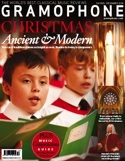Texte paru dans: / Appeared in:
*

GRAMOPHONE (12/2014)
Pour s'abonner /
Subscription information
Glossa
GCD921629

Code-barres / Barcode : 8424562016293
(ID479)
Consultez toutes les évaluations recensées pour ce cd
~~~~ Reach all the evaluations located for this CD
Reviewer:
Richard
Lawrence
The Festivities of Hymen and Cupid started out as a ballet-héroïque in three entrées called The Gods of Egypt. With the addition of a Prologue it acquired its present title as an opéra-ballet; it was staged at Versailles in 1747 as part of the festivities celebrating the marriage of the Dauphin, son of Louis XV, to a German princess. In the Prologue, Cupid is depressed at the thought of having to submit to Hymen; when the latter arrives and assures Cupid of his support, all is sweetness and light.
Each of the entrées is named after an Egyptian god. The initial hostility in the Prologue finds a counterpart in Osiris. Myrrine, ‘Amazone sauvage’, warns her queen against the mortals led by Osiris; but when the god arrives and invokes Cupid, Orthésie melts. In the second entrée, the river-god Canope, under the name of Nilée, is in love with the nymph Memphis. When she is about to be sacrificed he returns in his true guise, rebukes priests and populace, and marries her. Finally, Aruéris (Horus), god of the arts, encourages his love Orie – another nymph – to enter the Games over which he presides. Diffident at first, she interrupts the singing competition and wins the prize, summa cum laude, which is Aruéris himself. In all three entrées Cupid is referred to or addressed direct.
It should be clear from this synopsis, sketchy though it be, that this is no drama. Like Les surprises de l’Amour (Glossa, 12/13) it has much in common with Les Indes galantes; very little with Hippolyte et Aricie. What it does share with Rameau’s glorious tragédies en musique is the generous provision of music for ballet: not as divertissements but as part of the action. There are presentations, offerings, celebrations, all wonderful examples of Rameau’s inexhaustible invention. Then there are the splendid choruses, including one for double four-part choir plus two soloists when a terrific storm causes the Nile to overflow.
The solo
writing ranges from recitative to da capo arias; the delightful orchestration
includes independent bassoon parts. Apart from a backward harpsichord continuo,
the recording is excellent. And, oh yes, so are the singing and playing.
Fermer la fenêtre/Close window
Cliquez l'un ou l'autre
bouton pour découvrir bien d'autres critiques de CD
Click either button for many other reviews


